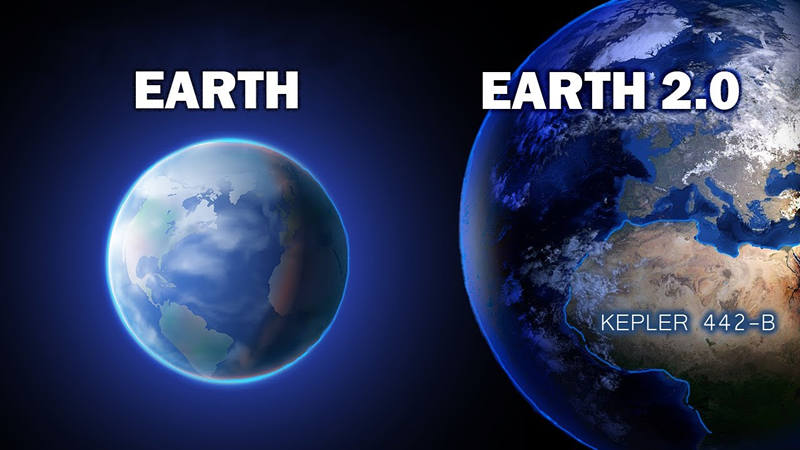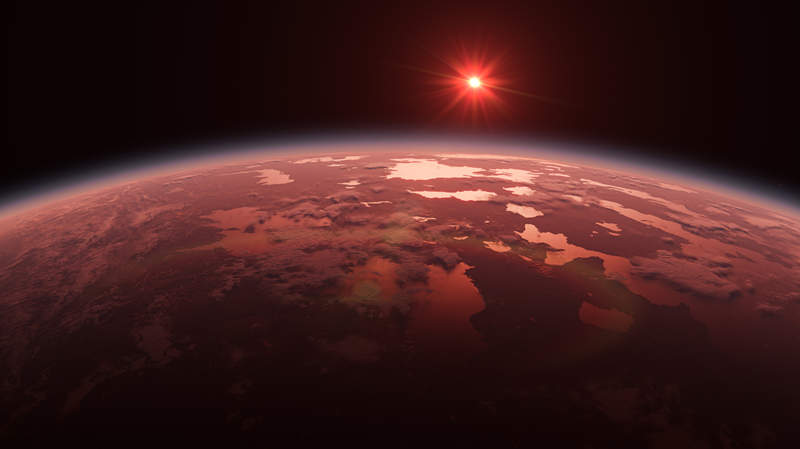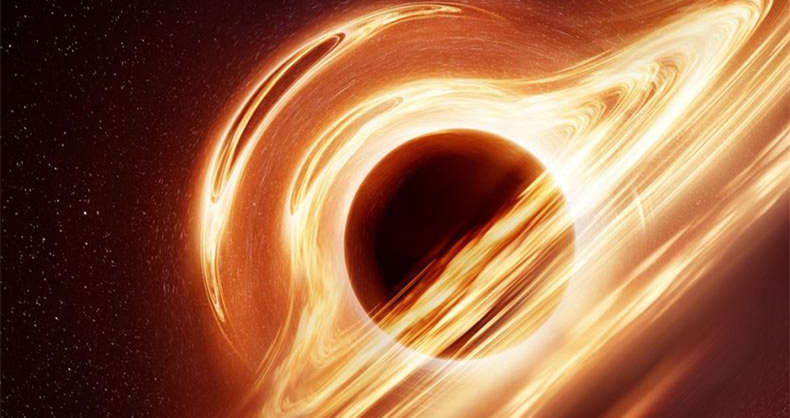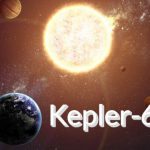Once, the mere mention of “astronomers discovering a habitable planet in the universe” would spark great interest. Just think, in the vast cosmos, humanity wouldn’t be alone, and that would be a wonderful prospect. However, as more and more habitable planets are being discovered, ordinary people have yet to step foot outside of Earth. Can humans really achieve interstellar migration?
The New Super-Earth
Let’s first get to know this new “super-Earth.” It was discovered relatively early on January 6, 2015, when NASA announced the discovery of a planet named Kepler-442b. This planet, Kepler-442b, is located at a distance of 1,120 light-years from Earth. Leaving aside the fact that we currently have no spacecraft capable of traveling at the speed of light, even if we were to build such a spaceship in the future, it would take 1,120 years at light speed to reach there. Despite being extremely distant, let’s take a closer look at this “super-Earth.”

Advantages of Kepler-442b
Firstly, Kepler-442b orbits the main star Kepler-442, which is an orange dwarf star, a type of K-dwarf main sequence star. Compared to our Sun, this type of star is smaller in size, with a mass of only 0.5 to 0.8 times that of the Sun. Additionally, orange dwarf stars are “cooler,” with surface temperatures ranging from 3,900 to 5,200K. Although not as bright as the Sun, astronomers believe that orange dwarf stars are more likely to host habitable, Earth-like planets orbiting around them. This is because orange dwarf stars remain stable on the main sequence for a longer period. Astronomers speculate that orange dwarf stars can remain stable for 15 to 30 billion years, which is incredibly long, especially compared to the Sun’s 10 billion years.
Currently, the age of our solar system is approximately 4.5 billion years, and Earth is roughly the same age. After 5 billion years, the Sun will no longer be stable, and Earth will be affected. Orange dwarf stars, on the other hand, remain stable for a longer time, providing more extended opportunities for the evolution of life on any planets in their vicinity. From this perspective, the environment of Kepler-442b appears to be more stable than Earth’s, making it more suitable for the evolution of life. Furthermore, due to its lower brightness, orange dwarf stars emit less ultraviolet radiation, which is friendlier to life. Secondly, Kepler-442b has a slightly larger volume than Earth, with a radius 1.34 times that of Earth. If these predictions are accurate, then this planet would be in the optimal range, as determined by experts, to sustain the development of life—approximately 2 times Earth’s mass. On Kepler-442b, gravity would be stronger; if you weigh 80 kilograms on Earth, your weight would be around 100 kilograms there, a gravity difference that the human body can tolerate.
At the same time, higher gravity can lead to a larger planetary surface area and fewer surface variations. Astronomers speculate that the land distribution on Kepler-442b is relatively fragmented, and warm, moist air currents from the ocean can easily reach various regions on the land, increasing the number of areas suitable for life.
Disadvantages of Kepler-442b
While these two factors make Kepler-442b more suitable for the existence of life than Earth, astronomers cannot rule out the possibility that Kepler-442b is an oceanic planet due to its low metallicity. Furthermore, as an orange dwarf star is a low-mass star, planets within its habitable zone are prone to tidal locking, and Kepler-442b is no exception. Its rotation period is synchronized with its orbital period, resulting in a perpetual day side and night side, without the alternation of day and night.

Habitable Zone
Let’s explain a new concept – the habitable zone. The habitable zone refers to the region where planets are conducive to the emergence and development of life, and where advanced civilizations like humans could potentially exist. The width and area of the habitable zone depend on the size of the star. If a star’s luminosity is only 25% that of the Sun, then its habitable zone is at a distance of approximately 0.5 astronomical units. In contrast, the habitable zone in our solar system extends from 0.99 to 1.70 astronomical units. If Earth’s primary star were not the Sun but a red giant, Earth would no longer be suitable for life because it would be too close to the star, causing all of Earth’s water to evaporate.
So, how habitable is Kepler-442b?
Kepler-442b is an exoplanet located in the “Goldilocks zone,” which is the habitable zone in the eyes of scientists. In simple terms, it’s the range of distances between a planet and its star that allows for a suitable surface temperature and the presence of abundant liquid water. Through observations and research on Kepler-442b, scientists believe it occupies the optimal position within the “Goldilocks zone.” It is similar in terms of mass and volume to Earth, making it highly likely to have abundant liquid water and sufficient oxygen. Calculations also suggest that Kepler-442b’s climate is even more habitable than Earth’s, with year-round warmth.

This means that if humanity had the opportunity to migrate to Kepler-442b in the future, we would no longer experience the discomfort of scorching summers and harsh winters. The climate would be comfortable year-round. This makes Kepler-442b more suitable for human habitation than Earth, with a habitability rating of 83.6%, compared to Earth’s 82.9%. Currently, Mars, which humans are considering for colonization, has a habitability rating of less than 50%. Therefore, Kepler-442b is one of the most suitable planets in the universe for human habitation, according to scientific calculations.
But can humans really travel to Kepler-442b? Kepler-442b is located 1,200 light-years away. What does this concept mean? Even if we were to travel at the speed of light, it would take 1,200 years to reach Kepler-442b from Earth. Clearly, even if we were to achieve light-speed travel, reaching Kepler-442b would remain an unreachable dream. At this stage, Kepler-442b, despite its habitability, is still a distant and unattainable destination for us. Furthermore, since Kepler-442b is even more habitable than Earth, there is also the possibility that life, perhaps even extraterrestrial civilizations, already exist there. If that were the case, it might be challenging for humans to colonize and claim it as their new home.
END:
Kepler-442b is not the first exoplanet discovered by astronomers, and certainly not the last. Similarly, it is neither the closest to Earth nor the farthest. However, rather than where habitable planets are located and how far they are, people may be more interested in knowing the possibility of humans traveling there. Unfortunately, as of now, that possibility remains very remote. If given the opportunity, would you be willing to move and live on another planet?
More UFOs and mysterious files, please check out our YouTube channel: MysFiles
Andromedans Encounters: Reveal the history of humanity








